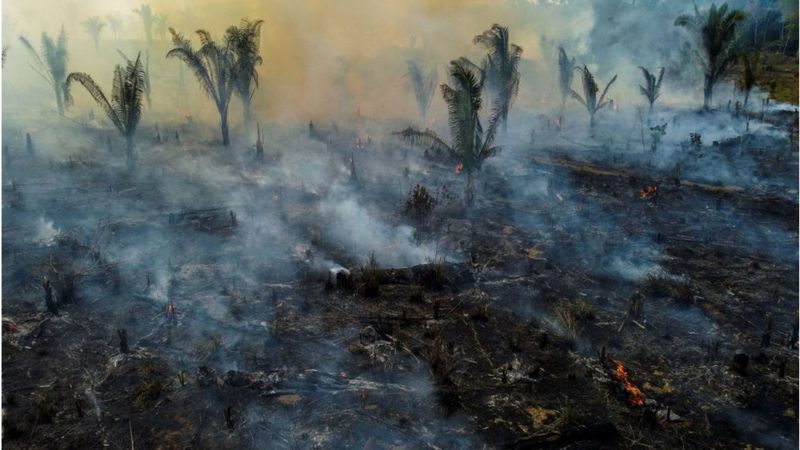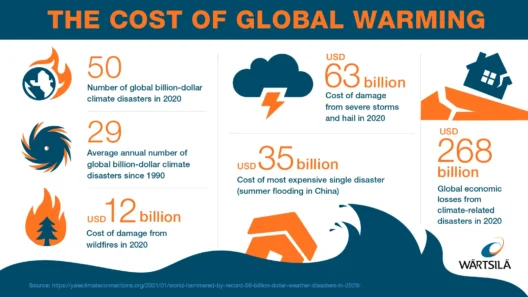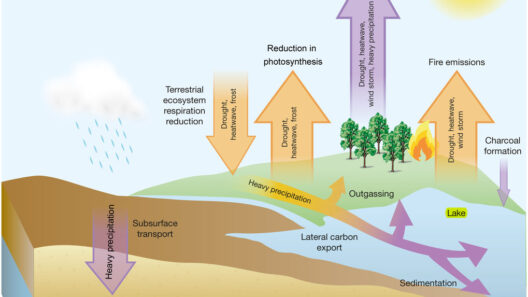Deforestation and climate change are inextricably linked, forming a tumultuous couple whose influence reverberates throughout terrestrial landscapes and marine realms alike. As the earth’s lungs, forests provide not only a vital sanctuary for biodiversity but also the essential mechanisms that regulate our climate. Yet, this delicate equilibrium teeters on the brink of collapse, as human activities relentlessly gnaw away at these natural bastions of life.
To grasp the magnitude of deforestation, one must first understand its foundational role in the lifesustaining processes of our planet. Forests are not merely collections of trees; they are intricate ecosystems teeming with diverse flora and fauna. Within their shaded canopies, countless species coexist, each interdependent on one another for survival. The vibrant tapestry of life woven into forests acts as a bulwark against climate change, sequestering carbon dioxide and releasing oxygen—essentially breathing life into the atmosphere.
However, the relentless advance of agriculture, logging, and urban expansion presents an existential threat to these green fortresses. The metaphor of a lumbering giant comes to mind, as industries voraciously consume swathes of forest, leaving behind barren landscapes—a stark contrast to what once thrived. Each tree felled is not merely a loss of wood but a catastrophic rupture in the intricate web of life. The symbiotic relationships that have evolved over millennia are disrupted, leading to a cascade of adverse effects affecting both local ecosystems and global climate patterns.
The grim realities of deforestation extend well beyond the loss of trees. It triggers a cascade of environmental degradation that manifests in various forms: soil erosion, loss of biodiversity, and alteration of hydrological cycles. The initial cuts into the heart of a forest may seem innocuous, but they unleash a chain reaction. Soil, once protected by tree roots, becomes destabilized and subject to erosion, leading to the silting of rivers and streams, which in turn harms aquatic life and diminishes water quality. As the trees disappear, so too do the myriad species that rely on them for habitat, feeding, and reproduction. This profound biodiversity loss diminishes the resilience of ecosystems, making them more vulnerable to diseases and invasive species.
Equally alarming is the contribution of deforestation to the greenhouse gas emissions that fuel climate change. The irony lies in this: as we seek to harness the bounty of forest resources, we simultaneously exacerbate the conditions that threaten human existence. When trees are felled and burned, the carbon stored within them is released back into the atmosphere, augmenting the concentration of greenhouse gases. The Intergovernmental Panel on Climate Change (IPCC) highlights that according to estimations, deforestation accounts for nearly 10% of global carbon emissions—a staggering figure that underscores not just the urgency of the problem but the responsibility shouldered by industrialized nations and emerging economies alike.
Turning our gaze to the broader implications, climate change acts as a vicious cycle, exacerbating the very conditions that lead to further deforestation. With rising temperatures, droughts become more frequent and severe, rendering vast swathes of forest susceptible to wildfires. These infernos, often ignited by human negligence, reduce entire regions to ash, further diminishing the planet’s capacity to absorb carbon. As weather patterns shift, some areas may experience increased rainfall, leading to flooding that disrupts fragile ecosystems and carries away precious topsoil. Climate change, in essence, becomes the overarching narrative framework through which the storyline of deforestation plays out.
The societal impacts of deforestation are equally profound. Indigenous communities, often the most effective stewards of forests, find their livelihoods threatened as their ancestral lands are razed. These groups possess invaluable knowledge about sustainable practices and possess a deep spiritual connection to their environment. By displacing them, we not only jeopardize their existence but also truncate the collective wisdom gleaned over generations—wisdom that could save our planet.
Moreover, deforestation poses a significant challenge to global food security. As agricultural lands expand into forested regions, monoculture farming practices often flourish at the expense of ecological diversity. These practices not only degrade soil quality but also render crops more vulnerable to pests and diseases, ultimately threatening the very food supply we depend on. A world increasingly laid bare by deforestation may find itself grappling with scarcity, sparking conflict and mass human displacement—a dystopian prospect that looms closer with each tree felled.
Addressing deforestation and its cascading effects requires concerted action at multiple levels. Strengthening forest governance, implementing community-driven conservation programs, and promoting sustainable agricultural practices are essential elements of a holistic approach. Reinforcing the intrinsic value of forests through policies that incentivize conservation over consumption will present a radical shift in how human societies interact with nature. Ultimately, humanity must cultivate a renewed sense of reverence for these natural giants, understanding that their survival is plainly intertwined with our own.
In conclusion, the tale of deforestation is multifaceted and urgent—a narrative woven with threads of environmental, social, and climatic implications. As we stand at a pivotal juncture, the choice before us is profound. Will we continue to dismantle our planet’s lungs or will we reclaim our role as custodians of the Earth? Activating a collective consciousness geared towards preservation and regeneration can allow for the revival of not just our forests, but the very essence of life itself. In essence, healing our planet begins with mending the rifts created by deforestation; for in parleying with nature, we may yet uncover the path towards a sustainable future.




